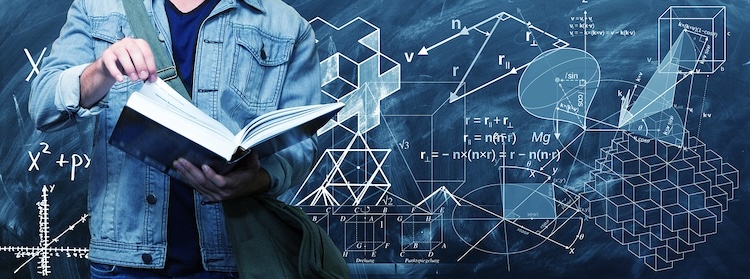Exploring the Fundamentals of Physical Science

The vast realm of physical science encompasses a diverse range of phenomena, from the microscopic particles that make up atoms to the colossal galaxies that dot the cosmos. At its core, physical science seeks to unravel the mysteries of the natural world by delving into the fundamental principles governing matter, energy, and their interactions. As we embark on this intellectual journey, let's embark on an exploration of some key pillars that underpin the captivating field of physical science.
Unveiling the Microscopic World
At the heart of physical science lies the microscopic realm, where atoms and subatomic particles engage in an intricate dance that shapes the very fabric of our reality. The atom once thought to be indivisible, reveals its complexity as we peer deeper into its substructure. The nucleus, composed of protons and neutrons, anchors the atom, while electrons whirl around in orbits, creating a delicate balance of forces. Quantum mechanics, a cornerstone of modern physics, provides a theoretical framework to understand the behavior of these particles, challenging our intuitions and expanding our comprehension of the smallest building blocks of matter.
The exploration of the microscopic world extends beyond individual atoms to the fascinating field of chemistry. Chemical reactions, governed by the principles of thermodynamics and kinetics, showcase the dynamic interplay between atoms and molecules. From the humble water molecule to the complex structures of DNA, physical science unravels the secrets of molecular interactions, shedding light on the processes that sustain life and drive the chemical transformations essential for our existence. As we delve into the microscopic intricacies of the atomic dance, the beauty and complexity of the natural world become increasingly apparent.
Harnessing the Forces that Shape our Universe
Transitioning from the minuscule to the grandiose, physical science also grapples with the profound forces that govern the behavior of the cosmos. The concept of energy, a central theme in physics, manifests in various forms, from the kinetic energy of a speeding car to the potential energy stored in a coiled spring. Thermodynamics, a branch of physical science, explores the principles governing the transfer and transformation of energy, unveiling the fundamental laws that dictate the behavior of matter in various states.
Beyond our terrestrial confines, the universe itself is a canvas upon which the forces of gravity, electromagnetism, and nuclear forces paint a cosmic masterpiece. Astrophysics, a captivating discipline within physical science, delves into the celestial ballet of stars, galaxies, and cosmic structures. Gravitational waves, a recent and groundbreaking discovery, provide a novel window into the fabric of spacetime, offering a deeper understanding of the universe's underlying structure. As we navigate the vast energy spectrum, from the microscopic to the cosmic, physical science unveils the intricate web of forces that shape our existence.
Navigating the Macroscopic World
In the macroscopic world that we navigate daily, the laws of motion reign supreme, dictating the behavior of objects ranging from the mundane to the extraordinary. Sir Isaac Newton's three laws of motion form the backbone of classical mechanics, providing a robust framework to understand the motion of objects and the forces acting upon them. Whether it's the graceful trajectory of a basketball in flight or the complex dynamics of planetary motion, these laws elegantly explain the observed phenomena that define our physical reality.
The application of Newtonian physics extends beyond the purely mechanical realm to the study of waves and optics. Light, a captivating interplay of electromagnetic waves, captivates our senses and reveals the secrets of color, reflection, and refraction. The fusion of classical mechanics with electromagnetism gives rise to the rich field of classical physics, where the laws of motion seamlessly intertwine with the principles of electricity and magnetism. As we navigate the macroscopic world, physical science unveils the elegance and precision with which the laws of motion govern the tapestry of our everyday experiences.
Accessible Curriculum Solutions for Physics Learning
As we embark on the journey of exploring the fundamentals of physical science, it's crucial to ensure that quality education is accessible to all. Recognizing the importance of comprehensive learning materials, educational providers have developed curriculum solutions tailored to physics education. These solutions encompass a range of resources, including student textbooks, e-books, teacher e-resources, student lab manuals, and equipment kits, all designed to facilitate immersive and engaging learning experiences.
Accessible education is not merely about affordability but also about inclusivity and accessibility. By offering a diverse array of resources at an affordable price point, educational providers empower students from all backgrounds to delve into the captivating realm of physics. From traditional textbooks to digital e-books, these resources cater to various learning preferences, ensuring that students can engage with the material in a manner that suits their needs. Moreover, teacher e-resources provide invaluable support to educators, equipping them with tools and strategies to create dynamic and interactive lessons that inspire curiosity and foster deep understanding.
Harnessing Technology in Physics Education
In the 21st century, technology has become an integral part of education, and physics education is no exception. Digital tools and platforms offer innovative ways to engage students and deepen their understanding of complex concepts. Virtual simulations and interactive e-books provide dynamic learning experiences, allowing students to visualize abstract principles and conduct virtual experiments. By incorporating technology into physics education, we bridge the digital divide, ensuring that students are equipped with the skills and knowledge necessary for the modern scientific landscape.
The integration of technology extends beyond the classroom, with online resources fostering collaborative learning communities. Discussion forums, video tutorials, and webinars create opportunities for students and educators to connect, share insights, and seek clarification on challenging topics. This interconnected approach to learning not only enhances the educational experience but also prepares students for the collaborative and technologically driven nature of contemporary scientific research.

The Role of Inquiry-Based Learning in Physics
Beyond the structured curriculum and technological tools, fostering a genuine curiosity for physics is essential for long-term engagement and mastery of the subject. Inquiry-based learning, characterized by exploration, questioning, and discovery, encourages students to take an active role in their education. By posing real-world problems and guiding students through the process of inquiry, educators instill a sense of ownership and passion for the subject. This approach not only deepens understanding but also cultivates critical thinking skills that extend beyond the confines of the physics classroom.
Inquiry-based learning encourages students to ask questions, design experiments, and conclude, mirroring the practices of professional physicists. It transforms the learning experience into a journey of exploration, where students not only grasp the fundamental principles but also develop the skills to apply them in novel situations. By nurturing curiosity and instilling a sense of wonder, inquiry-based learning lays the foundation for a lifelong appreciation of physics and the scientific process.
As we conclude our exploration into the fundamentals of physical science, it becomes evident that a holistic approach to education is essential. From understanding the microscopic world to navigating the cosmic forces, from accessible curriculum solutions to harnessing technology and nurturing curiosity through inquiry-based learning, the landscape of physics education is rich and multifaceted. By embracing these diverse facets, we empower learners to not only comprehend the principles of physics but also to develop the skills and curiosity necessary for a lifelong journey of scientific exploration and discovery.



